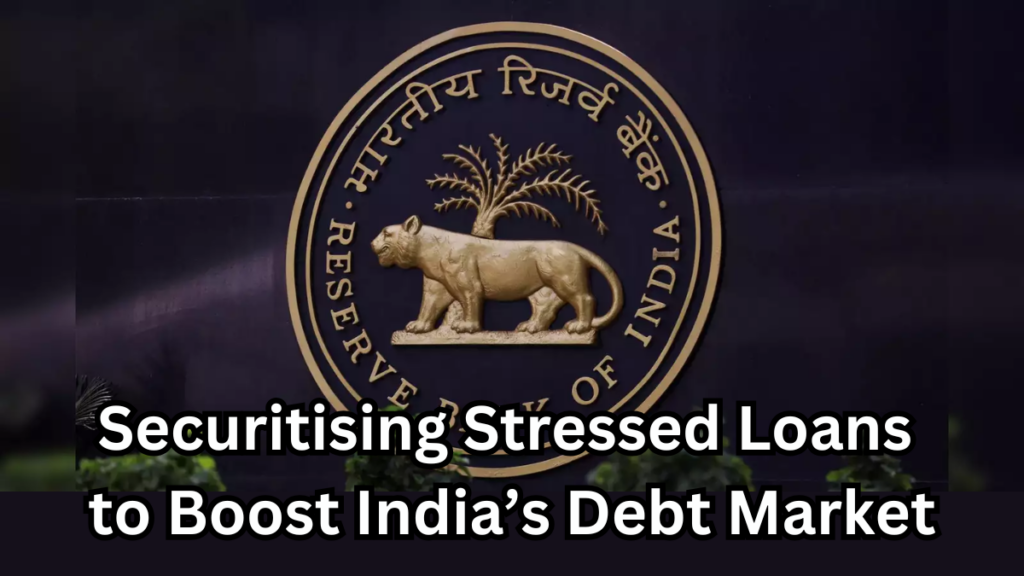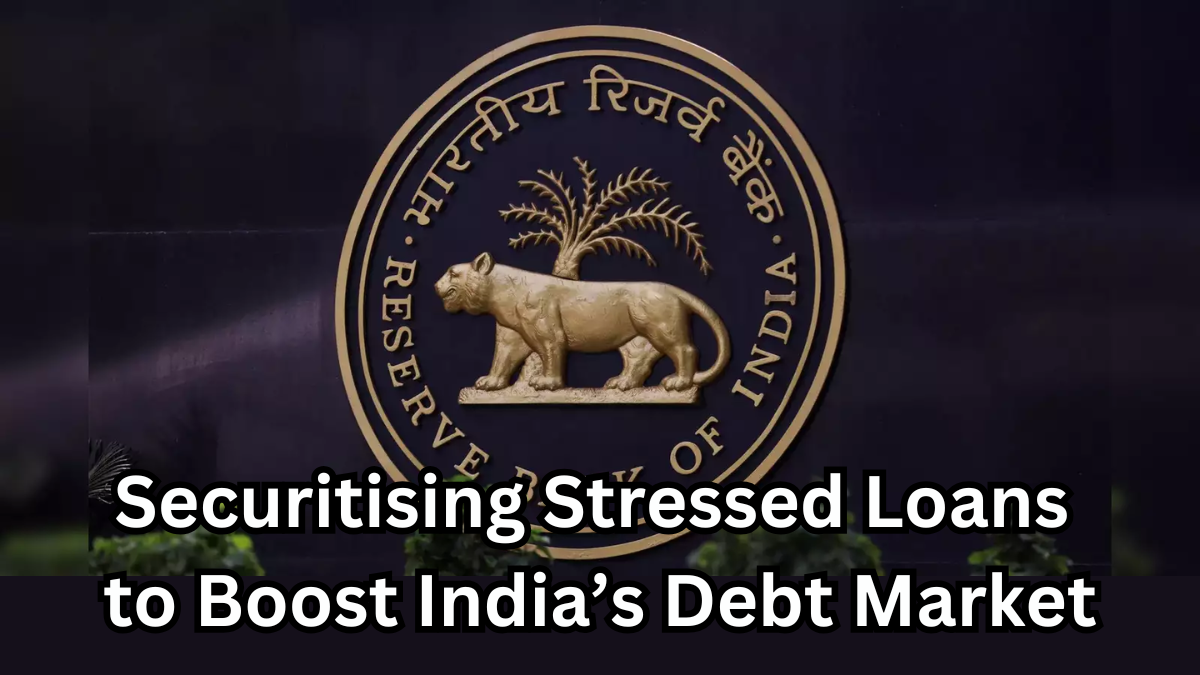In a game-changing move, the Reserve Bank of India (RBI) is rewriting the rules of India’s financial markets. By permitting the securitisation of stressed or non-performing loans, the RBI aims to breathe fresh life into the country’s debt ecosystem. This bold step opens the doors to deeper market participation—especially from foreign portfolio investors (FPIs) and private credit funds looking for high-yield opportunities in emerging markets.

What Exactly Has the RBI Proposed?
Until now, securitisation was limited to standard, performing loans. But with this new policy shift, the RBI has widened the scope to include stressed assets, such as:
-
Personal loans
-
Retail debt
-
Small business loans
-
Credit card dues
This means banks can now bundle and trade non-performing loans (NPLs) just like regular debt instruments in the secondary market.
Key Highlights at a Glance
-
Securitisation extended beyond standard assets to include bad loans
-
Banks can offload toxic assets in a market-driven manner
-
Attracts foreign and domestic investors seeking higher returns
-
Boosts liquidity and depth of India’s debt markets
By the Numbers: What the Data Tells Us
Here’s a snapshot of the figures shaping this financial transformation:
| Key Metric | Value |
|---|---|
| Securitised loan volume (2024–25) | ₹2.3 trillion (approx. $26.74 billion) |
| Projected bad loan ratio by March 2026 | Rising from 2.6% (Sept 2023) to 3% |
| Share of fresh retail bad loans (Apr–Sep ’23) | 52%, led by personal loans and credit cards |
Why It Matters: For Banks, Investors & the Economy
For Banks
-
Cleaner balance sheets: Banks can shift bad loans off their books more easily.
-
Better capital management: With improved capital adequacy, banks can issue new loans confidently.
-
Smarter exits: This offers a more favorable alternative to selling to Asset Reconstruction Companies (ARCs) at huge discounts (often up to 90–95%).
For Investors
-
Higher returns: These securitised loan pools may yield returns similar to junk bonds.
-
Global participation: FPIs and private credit funds are eyeing India for its emerging market potential.
-
Diversified exposure: Adds variety beyond traditional fixed-income securities.
Industry Speaks: What Experts Are Saying
“This move is strategic. It lightens banks’ balance sheets and opens new channels for investor participation.”
— Hari Hara Mishra, CEO, Association of ARCs in India
“The yields from such securitised pools could rival junk bonds or distressed asset investments.”
— Ajit Velonie, Senior Director, Crisil Ratings
“Valuing these deals will be complex. Multiple micro-level factors influence pricing.”
— Manisha Shroff, Partner, Khaitan & Co.
Not Without Hurdles: Key Challenges Ahead
While the opportunities are enormous, there are some genuine concerns that need addressing:
Complexity in Pricing
-
Depends on several factors like loan quality, borrower credit history, and market sentiment.
Legal Recovery Delays
-
India’s judicial system is notoriously slow, which could delay recoveries and hurt investor confidence.
Regulatory Maze
-
Existing securitisation frameworks are complex and fragmented. Clearer, streamlined policies will be essential.
Rising Global Interest in Indian Debt
Emerging markets like India have become hotspots for distressed debt funds from the U.S. and Europe. These funds are drawn to India’s high-yield, risk-adjusted return potential, making this RBI policy perfectly timed.
Quick Overview Table
| Stakeholder | Advantage |
|---|---|
| Banks | Reduce bad loans, improve capital adequacy |
| Investors | Access to high-yield, alternative debt instruments |
| Debt Market | Improved liquidity, deeper participation, better risk dispersion |
| Regulators | Moves India closer to a more resilient and inclusive system |
Frequently Asked Questions (FAQs)
1. What is securitisation of stressed loans?
It’s the process where banks bundle non-performing loans and convert them into tradable securities, allowing investors to buy portions of the debt and potentially earn returns.
2. Why is this move significant for banks?
It enables banks to free up capital by removing bad loans from their books, which helps them lend more actively and maintain healthier balance sheets.
3. Are these investments risky for investors?
Yes, they carry higher risk, but also offer higher returns, similar to junk bonds. Investors should evaluate the asset quality before investing.
4. Will this affect retail borrowers?
Not directly. However, banks may become more cautious in issuing retail loans, given the rising share of bad loans from personal lending.
If this reform works as intended, it could redefine India’s debt market, offering relief to struggling banks and golden opportunities to savvy investors. A new chapter in financial innovation might just be unfolding.
Click here to learn more
